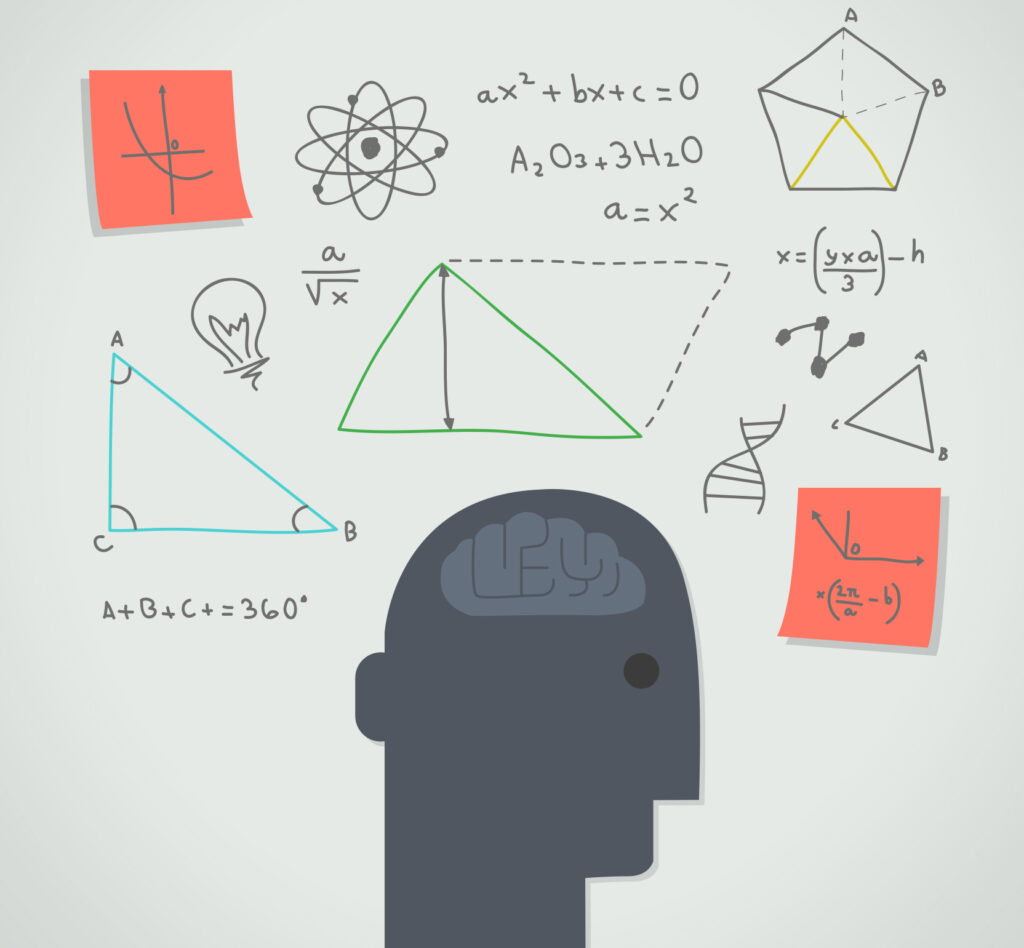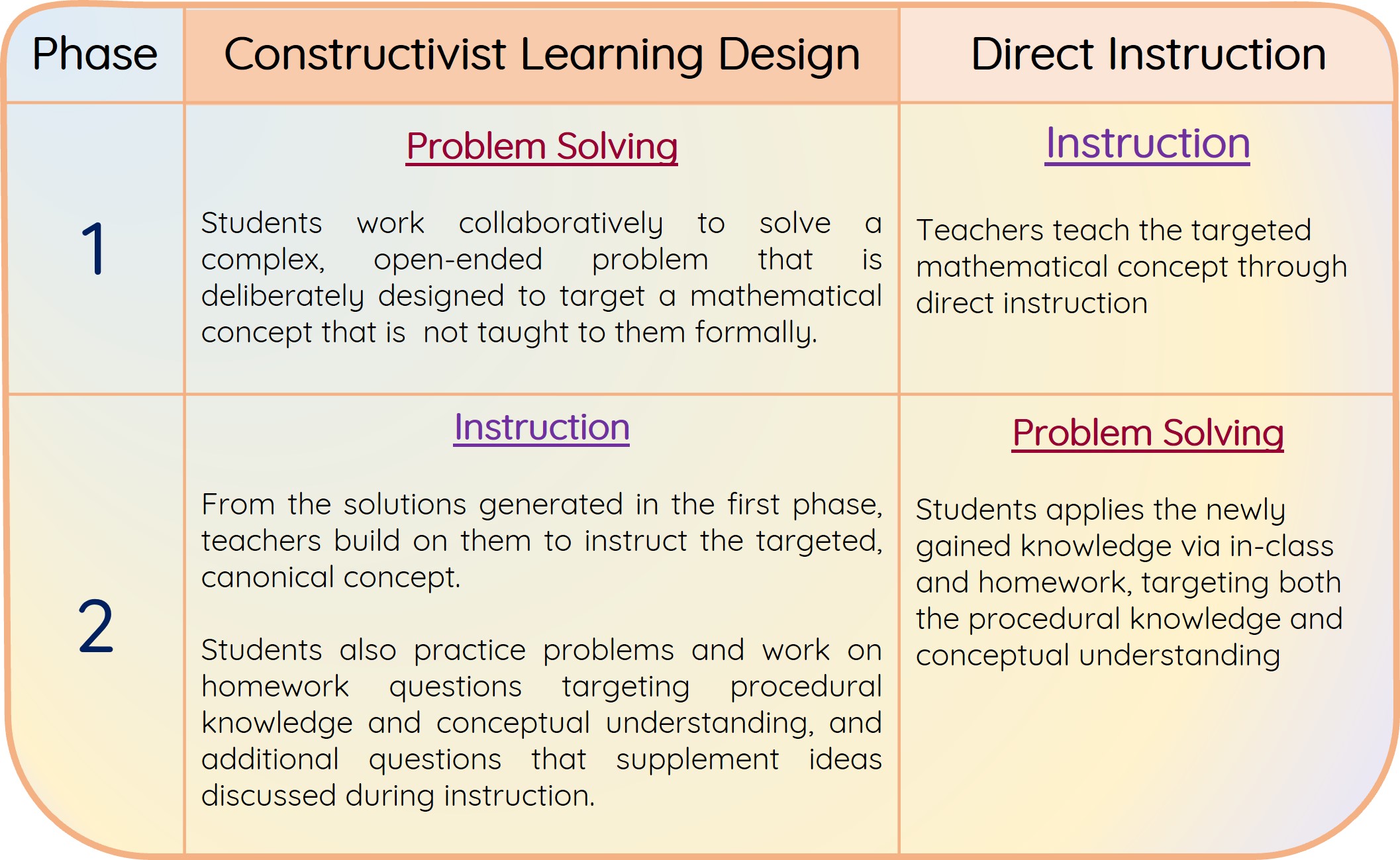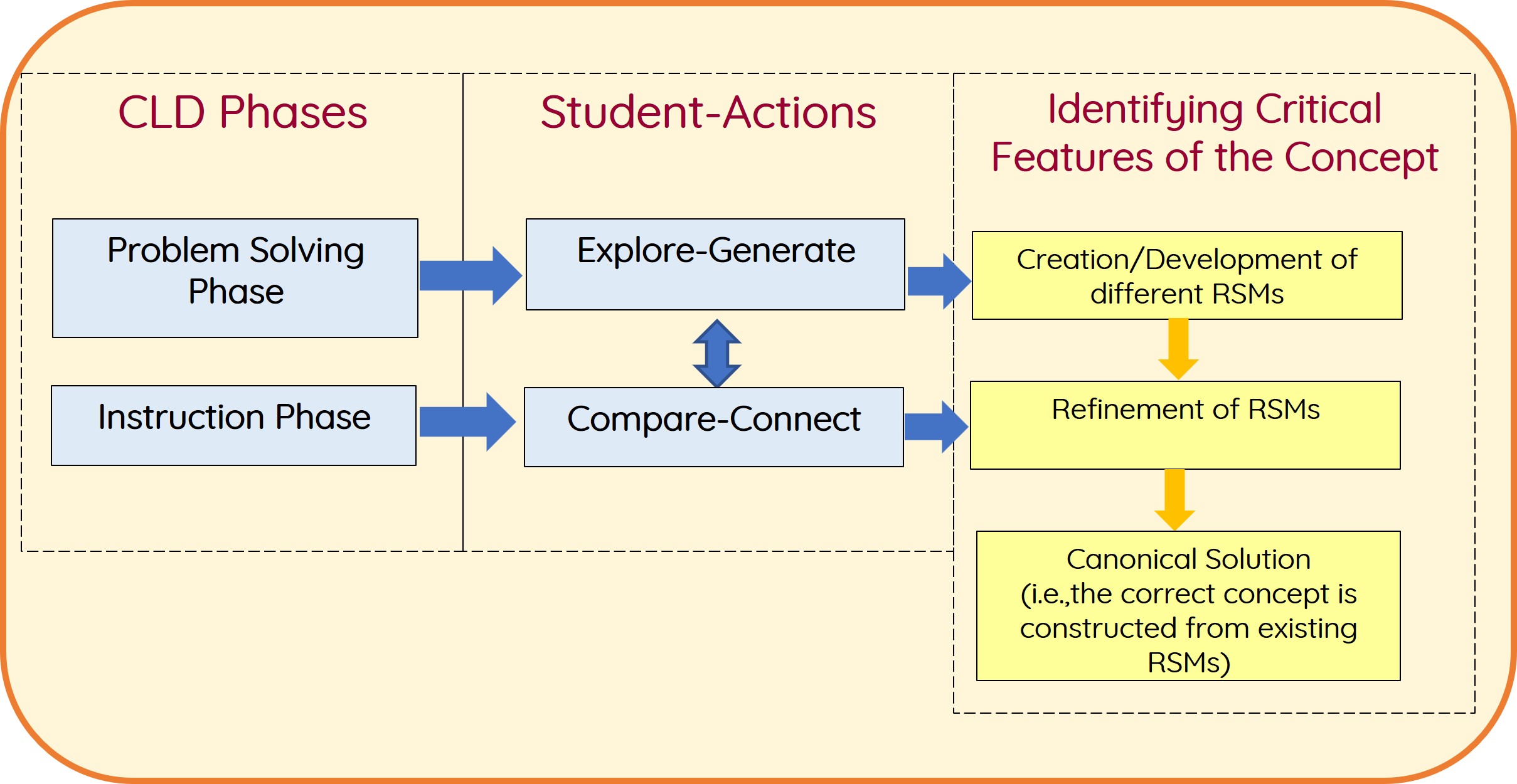Theoretical underpinnings

In constructivism, knowledge is asserted to be actively constructed by the learner, and that knowledge is the product of one’s cognitive acts via a meaning-making process. New understandings by an individual can be built upon by their prior knowledge and via the process of interaction and negotiation. The Constructivist Learning Design (CLD) endeavoured to unpack these tenets, and build upon propositions about learning posited from cognitive and social constructivist positions, including (i) making students’ prior knowledge structures visible and testable , (ii) the simulation of learning via cognitive conflict or disequilibrium, and (iii) facilitating the evaluation of the viability of individual understandings and social negotiation.
For these propositions to emerge in the CLD, the environment should (i) afford the elicitation and building upon of students’ pre-existing informal or formal understanding of a concept, (ii) aid the development of an organised and interconnected knowledge that facilitates retrieval and application, (iii) engage students’ thinking about their thinking and learning through conflict inducing processes, and (iv) build a social surround that allows for interpersonal and social nature of learning and this could be done via collaborative learning (see Lee et al., 2021 for more details).
Fulfilling constructivism
To fulfill these principles, the CLD inverts the direct instruction sequence, and opens with (i) a problem-solving phase, where students work in groups to solve a complex, open-ended problem targeting a concept that they have not been taught and (ii) an instruction phase where the teacher builds upon the student-generated solutions from the problem-solving phase to teach the targeted concept. To reinforce the connections that were built during the instruction phase, students will also work on practice questions that are calibrated to the ideas and critical features taught during the instruction (see Figure 1 below) .

Similar to learning designs like the Japanese Open-Ended Approach (Becker & Shimada, 1997) and Productive Failure (Kapur & Bielaczyc, 2012), students in the problem-solving phase are encouraged to actively generate as many solutions as they can to the problem, thus giving them the opportunity to tap into their intuitive or formal prior knowledge. Peer collaboration in this problem-solving phase allows for the negotiation of meaning among peers. The teacher’s role in this phase is to ensure conceptual conflict and disequilibrium. Specifically, while students are engaged in problem-solving, the teachers’ role is to facilitate students’ problem-solving efforts by pointing out the affordances and limitations of students’ solutions and suggesting ways to refine their strategies. As a result, conceptual disequilibrium is induced, and students are prompted to seek out alternative solutions. From the observations of students’ solutions, teachers would also be able to identify the students’ zone of proximal development(Vygotsky, 1978). Additionally, teachers are to keep the groups on task and provide them with affective support to ensure that groups persevere in their problem-solving effort.
In the instruction phase, the teacher will build upon the solutions that were produced in the problem-solving phase to teach the targeted concept or strategy. The aim of the instruction phase is to resolve the conceptual disequilibrium that was induced during the problem-solving phase and begin the process of assimilation and accommodation (Piaget, 1977) in understanding of why the targeted concept is the most viable given the problem. In line with the research from Productive Failure (Kapur, 2008, 2010), the teachers’ role is to orchestrate a discussion with students on how their solutions compared and contrasted to the canonical one vis-à-vis critical features that differentiated the targeted concept with the others. In alignment with the guidelines proposed by the Chinese Post-Tea House approach (Tan, 2013), teachers should reinforce the deep conceptual understanding of the concept with the introduction of higher-order practice questions that show the affordances and constraints of the target concept in other contexts.
What CLD means for teacher practicing constructivism in the classroom
Example tasks that are designed via the CLD can be found in this website for topics like gradient of linear graphs, simultaneous linear equations, and angle properties of circles.
The CLD offers teachers’ opportunities to clue intostudents’ prior knowledge structures and knowledge construction processes, as students engage in carefully designed problems, tasks, or activities aimed at eliciting a diversity of knowledge structures. The student-generated solutions that are elicited in the problem-solving phase , known as Representations and Solution Methods (RSMs; Kapur & Bielaczyc, 2012), mark students’ preliminary constructions and understanding of the targeted concept. RSMs can be intuitive constructions at first. More sophisticated, formal mathematical RSMs can be developed as students move from individual attempts to co-constructions during group discussions facilitated by the teacher. The instruction phase serves as a purposeful platform for focused discussions where students are encouraged to analyse and compare the variety of solution pathways or RSMs created earlier, often with teacher facilitation.
During the two phases of CLD, students engage in four main actions: explore-generate, compare-connect (see Figure 2 below; Ng et al., 2021). Explore-generate are actions students undertake when they experiment with scenarios, cases, and examples of events presented in the problem. A range of mathematical arguments, computations, and representations are thus generated or constructed as RSMs. Compare-connect are actions which take place naturally during discussions because selected RSMs are compared and analysed for their affordances and constraints in encompassing the critical features of the concept. Students may draw connections between cases and across sets of prior knowledge as they look for similarities and differences amongst the RSMs. The double arrow between explore-generate and compare-connect signals the likely cyclical nature of these processes in each phase as part of development and refinement of RSMs.

Tractability of CLD in Singapore classrooms
The CLD, which embeds constructivist principles in authentic, complex tasks, can allow for the appreciation and evaluation of multiple, alternative representations and solutions, and it encourages students’ voice and ownership in learning. Such an environment was also demonstrated to be effective for mathematics learning and the development of 21st century competencies
Led by Associate Professor Lee Ngan Hoe from the National Institute of Education (NIE) with funding from a developmental project via a grant from the Singapore Ministry of Education under the Education Research Funding Programme (Project code DEV 04/17 LNH), the learning effects of a CLD unit designed on the concept of gradient of linear graphs for secondary one (grade 7) students was compared to a direct instruction (DI) (Lee et. al., 2021). Students in the CLD condition were able to effectively apply their cognitive, intrapersonal, and interpersonal competencies—akin to higher-order thinking skills, self-management and dialogue skills—while engaging in deeper learning. Additionally, CLD students outperformed DI students in achievement test questions that assessed their conceptual understanding of the targeted concept and ability to transfer. Evidently, Lee and colleagues’ (2021) study demonstrates CLD’s tractability and efficacy in facilitating deeper learning processes that develop transferrable skills and knowledge, and thus in preparing student to face the challenges of the future.
